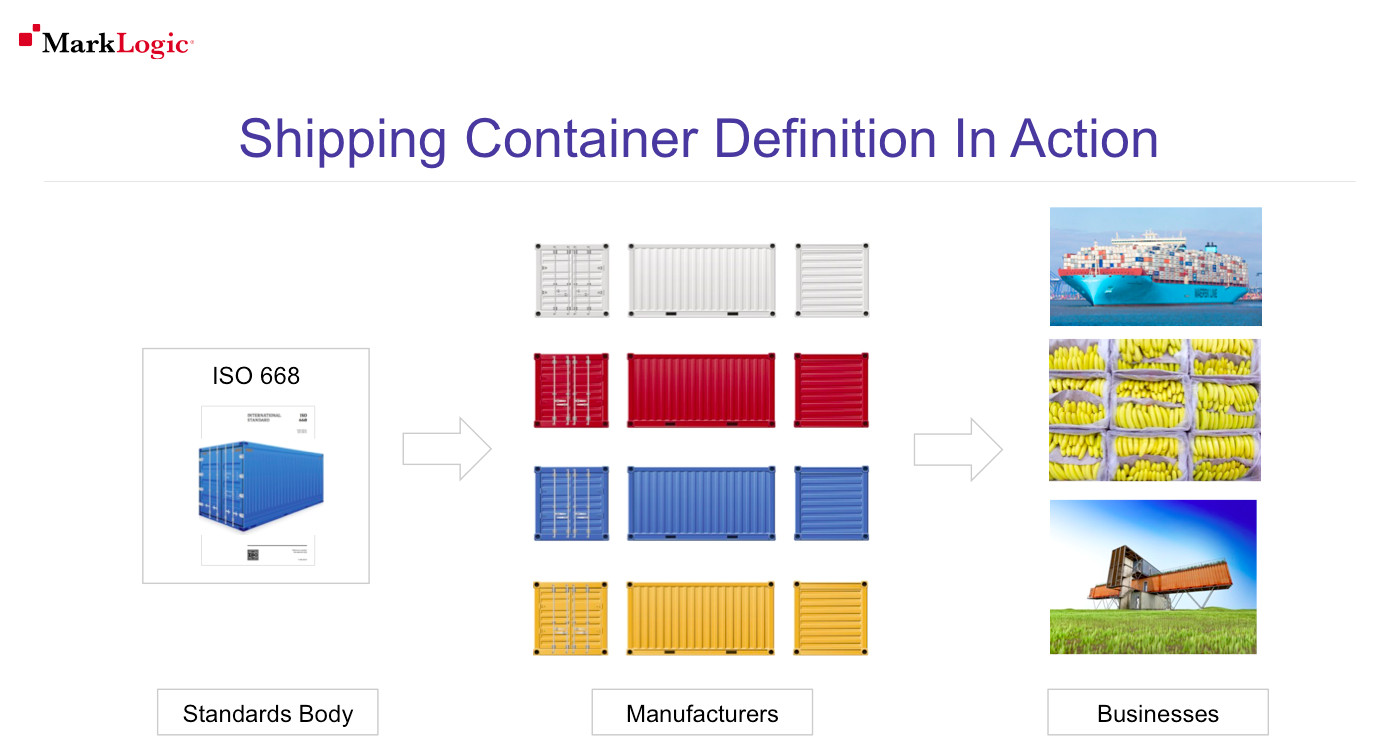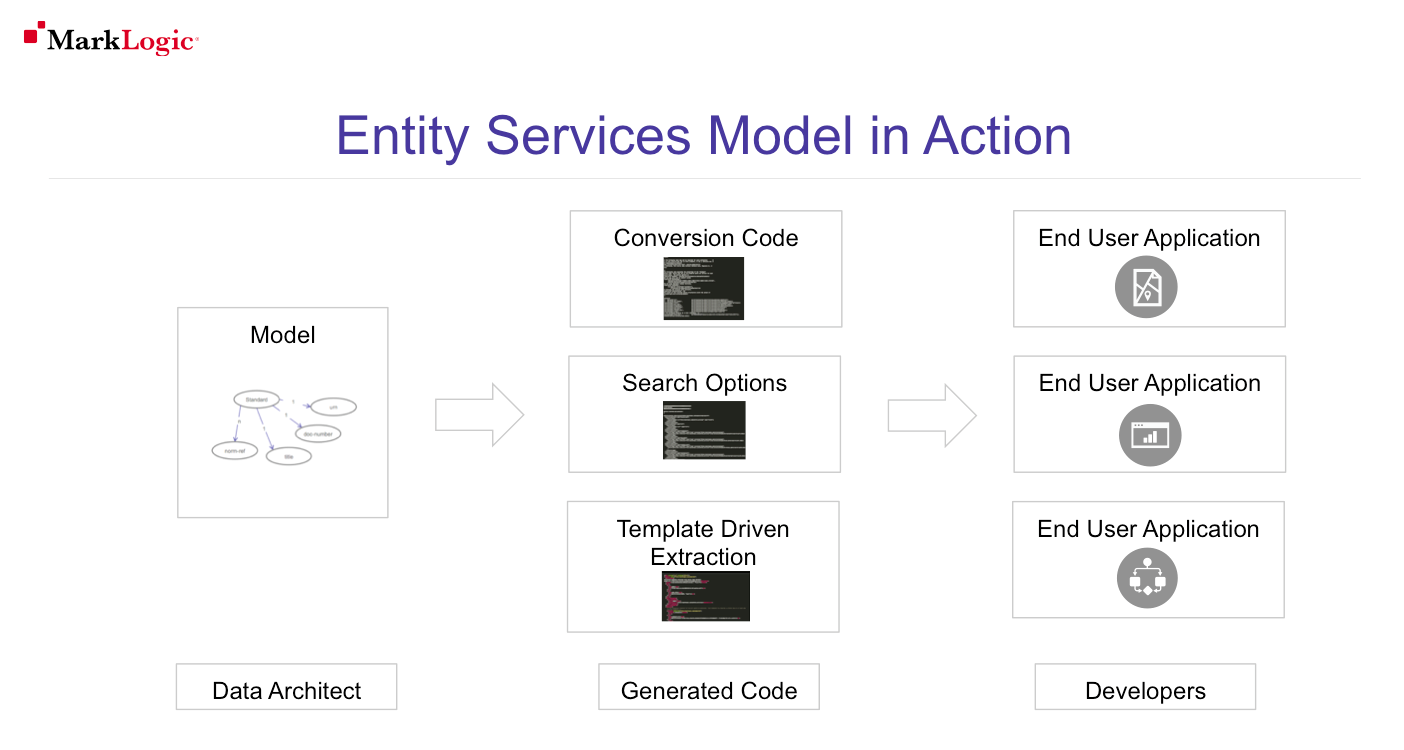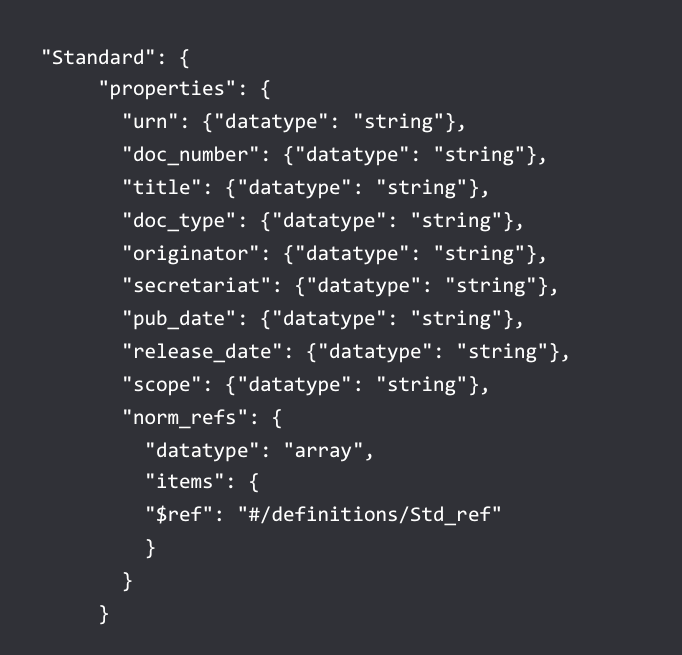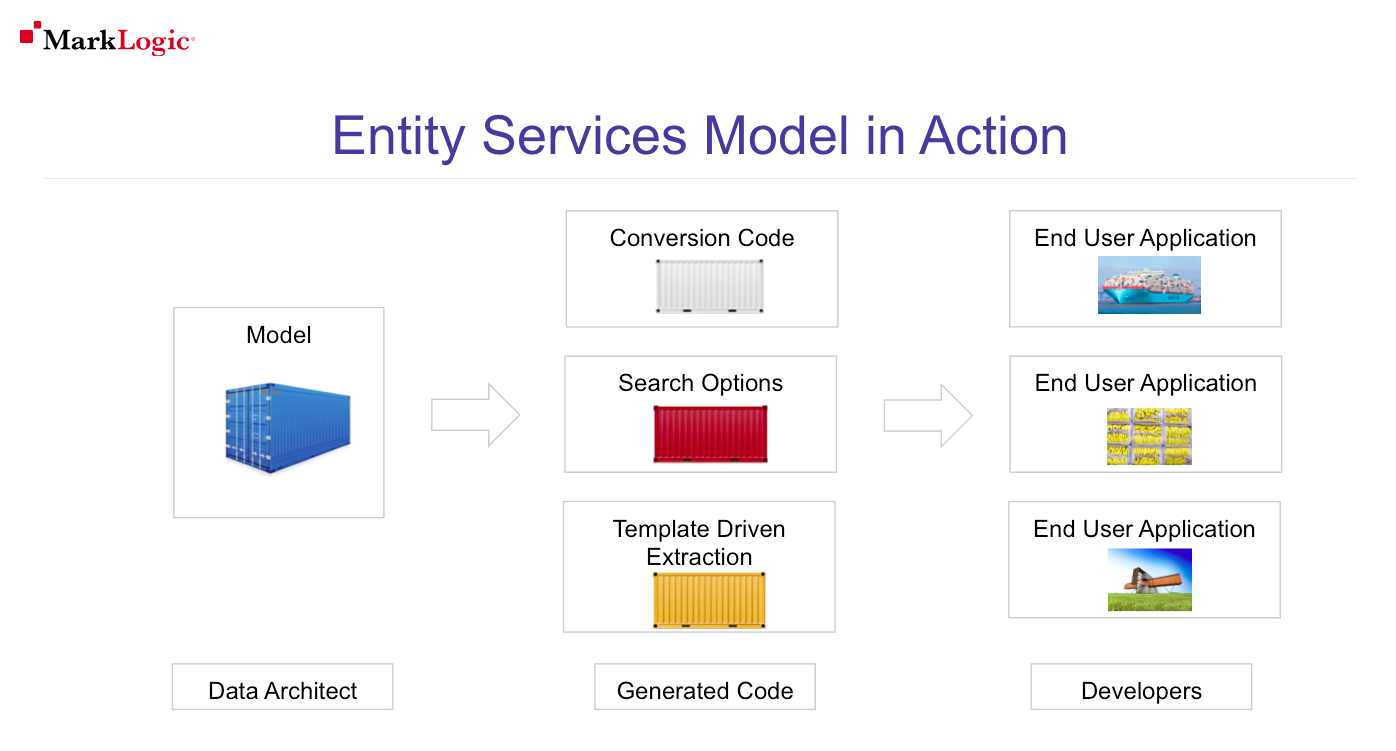Introduction
Across every industry, efforts to define processes and materials have resulted in dramatic improvements in productivity and efficiency. These technical and business process definitions are often expressed as standards that are created with leaders in the industry and international standards organizations and adopted by the industry.
Like industry standards, data definitions could also have an industry impact to enable collaboration and efficiency in the creation, management and delivery of critical information.
However, the management of data definitions and the creation of data standards are still largely separate from the applications and processes that use those definitions. In fact, these processes often separately define data models for each purpose.
This paper will cover two developments in the space of defining data standards and data models: the NISO STS standard to define a data model for standards documents and MarkLogic Entity Services to put data models into action in the database.
The Impact of Definition
Both standards and data models benefit their constituencies by providing common definitions that enable interoperability and efficiency between the organizations that adopt the common standards and models.
Definition enables:
-
Interoperability – the ability for multiple processes and applications to make use of the definition
-
Specialized roles – relying on the standard and model, groups can specialize their efforts and focus expertise and resources optimizing their role
-
Universal application – wide adoption and multiple uses creating benefits across the industry
One example of definition in action is the impact of the ISO freight container standards. Developed in the 1960s, these standards have dramatically changed the shipping industry and are one of the biggest factors in the economic globalization that has changed the world in the last 60 years.
Prior to the adoption of the definition of the freight container described in the standards, the industry moved break bulk cargo. This freight came in many different shapes and sizes and required each step in the shipping process to be unique and custom for every shipment. The freight container standard brought dramatic efficiencies. Time in port was reduced from 4-5 days to overnight while increasing the capacity of ships and standardizing and optimizing every step of the shipping process.
The result has been a dramatic change in the cost of shipping. Prior to the adoption of the freight container standards, shipping was up to 20% of the total cost of goods. With the adoption of the container, this now a fraction of a percent. (Ninety Percent of Everything, Rose, 2017)
To gain these benefits, the industry put the definition of the freight container into action. The definition itself is the standard—a precisely worded document. The manufacturers that make the containers use that definition to create the containers. Everyone else in the shipping industry can then use those standard containers for whatever purposes they want. The container ship operators or crane designers don’t have to know how to make the containers; they can rely on the containers having a specific size and fittings as defined in the standard and specialize in making their part of the process as efficient as possible. This is illustrated in figure 1.
Figure 1:

This is an example of the benefits of definition. Because the freight container is defined, it is interoperable with containers moving easily between uses, it enables each part of the industry to specialize, and it is universally applied with many uses and adaptations across the industry.
Data Definition
Today, data is defined in many ways, but these approaches haven’t yet delivered the impacts of the wide adoption of definition and standards. This is because the way data is defined is not put into action in the same way that definitions and standards are applied to other industries.
Instead, data is defined in many places and with many different tools. This includes:
-
Database schemas that have requirements and optimizations for specific uses of the data
-
Application code that interpret the data and create functionality to create, query and access the data
-
ETL (extract, transform and load) code that processes, transforms and moves the data from one system to another
All of these processes may work with the same data, but they all, independently, define that data in many different ways and with many different variations.
There may be an overall definition of this data— an entity model that describes the data, but this model is usually only interpreted and referenced by each process that needs to work with the data. There is no direct connection to the actual schemas, application code or ETL configurations that process and handle the data. Instead, each of these tools and the many more that can be part of a project, creates and updates its own independent data models suited to the outcome of only that process.
This lack of a definition or model that is put into action means that technology teams can struggle with interoperability of code and data models, have issues creating specialization as each resource working on a process has to understand every other application’s definitions. As a result, there is seldom universal adoption of data models and code across the industry.
MarkLogic Entity Services
The goal of MarkLogic Entity Services is to define functionality and processes that put the entity model, the description of the data in its truest and most universal form, into action.
The MarkLogic Entity Services is designed to:
-
Describe real-world entities, properties, and relationships in a Semantic model
-
Automatically derive services, transformations, configuration from the model
-
Enable users to govern context and data together
-
Enable users to take an iterative and evolutionary approach to use only as much as you need of the data model for each iteration to adapt to changes instead of setting the entire model in place at the start
The starting point to use Entity Services is to create an entity model. This model describes the data in its most complete form and includes the following elements:
-
Entities – the domain objects that this data is about
-
Example: A Customer is something that exists as part of my business/mission.
-
-
Properties – characteristics of that entity
-
Example: Customer entities have a Name that is of type string and is required in the context of billing.
-
-
Relationships – how entities fit together
-
Example: Customers place Orders.
-
Once the entity model is created, it is put it into action with services that use the model to update data and generate code that developers use in their projects.
These artifacts are generated by the entity services code modules, can be customized by the developers, and then installed in the MarkLogic database to enable the functionality based on the entity model. This is shown in Figure 2.
Figure 2:

With this pattern, the MarkLogic Entity Services can allow technology teams to gain the benefits of definition. These benefits include:
-
Interoperability – everyone can refer to the model
-
Specialization – developers don’t need to know how to model data – they can just use data, just like the ship and crane operators don’t need to know how to build boxes
-
Universal Adoption – this data model can be used for multiple purposes in many applications
NISO STS Standard
To show MarkLogic Entity Services in action and demonstrate the value of putting the definition into action to technology teams, MarkLogic selected the newly proposed data standard for standards, NISO STS as the basis of a demonstration application.
This initiative from NISO brought together the leaders for the world’s standards bodies to define a data standard that would bring the many benefits of standardization to the standards themselves.
The current draft of the standard was released in April 2017. It is based on ANSI/JATS and the ISO STS format. The community recognized the potential value of wider adoption of this data standard and created the NISO STS initiative to define the tag set standard for standards.
The goals of the initiative are:
-
Ease publication of standards
-
Increase interoperability of standards
-
Aid distribution of standards
-
Improve the future of standards publishing
Full information on the NISO STS standard and full documentation are available at: http://www.niso.org/workrooms/sts/
Entity Services NISO STS Demo
Working with the International for Standardization (ISO), one of the main sponsors of the NISO STS initiative, MarkLogic created a demonstration of the Entity Services features using content samples from the ISO Freight Container standards. These data samples were in closely related ISO STS format as NISO STS is just in the recommendation phase.
The demonstration highlighted the major features of MarkLogic Entity services to create a data model and put that model into action with generated code and artifacts as well as the overall impact of putting the data definition into action.
Getting Started
The demonstration first creates the building blocks that data modelers use to generate the universal artifacts that are later used in the actual application code.
Entity Model: a model of the key data elements in the NISO standard that included, for the demo, URN, doc number, title, doc type, originator, secretariat, pub date, release date, scope and normative references. The model is designed to be used iteratively and these data elements were all that were needed for the demonstration. The model is created in JSON and uploaded into the database where it is persisted as semantic triples. The model can then be queried and linked to other entity data to provide additional context, such as business definitions or security data, to applications using and governing the data. The Entity Model for this demonstration is shown in Figure 3.
Figure 3;

Instance Converter: Code to map the source data in the data in the STS format to the entity model. The exact paths to the elements in the source documents are input the converter file enabling all the other Entity Services functions to access data from the source documents in structure of the entity model.
Instance Generator: To put the mode into action, the entity services use the converter and the entity model to create new documents in the database. These documents use the envelope pattern that captures the entity data and other metadata in an envelope around the original source document. This enables developers and subsequent entity services functions to easily access the entity data while also making the original source data available.
Putting the Model into Action
Using these foundational pieces, data molders can then generate code and developers put that code into action based on the shared and defined data model.
Search Options: model driven code to generate a MarkLogic Search API options node. This includes the specification for search constraints and facets with the typed data defined in the entity model.
Template Based Extraction (TDE) / SQL Query: TDE is a new feature new of MarkLogic 9 that enables a view of data to be generated based on a template that describes the source of the data in the database and structure of the view. Once the template is loaded into the database, data supporting the view is automatically created (in triple format) and made available for query using MarkLogic’s SQL and Optic API functionality. MarkLogic Entity Services features automatically generate this template based on entity model enabling developers to immediately use the TDE features. For the demo, this was used to run SQL against the data elements defined in the entity model.
Custom Application: to demonstrate the entity model in action, the demonstration included a custom application that used the search options to access and search the standards with facets for originator, secretariat, pub date and release date. The application also featured normative reference SQL queries when displaying a standard to show the related standards and explore the additional freight container standards that also relied on those standards. Normative references SQL query is shown in Figure 4:
Figure 4:

In addition to these features, the Entity Services functionality includes these features not explored in the demonstration:
-
Entity schema: generate an XML schema (.xsd) from the model
-
Database configuration: generate MarkLogic database configuration files to set indexes and other database configurations from the data model
The features of MarkLogic Entity Services define a pattern that enables the entity model to be put into action and for technology teams to gain the benefits of definition.
Summary
The benefits of definition can have an impact on industries and processes that are able to put definitions into action. These results can be dramatic and world changing as in the case of the shipping industry and the ISO freight container standards.
Bringing these benefits to data and information technology has, to date, been challenging as data definitions and standards are often separated from the processes that use the data.
The demonstration using NISO STS, a standard for standards, and MarkLogic Entity Services, the pattern to put the data model into action, shows that these benefits can be within reach for information technology. These include interoperability as data models can be used for multiple purposes, specialization of roles as developers and data architects can focus on just their tasks and universal adoption as everyone, including external and industry organizations, can rely on and use the data model. This is illustrated in Figure 5.
Figure 5:

As these processes and standards are adopted, information technology teams can see the benefits that other industries have seen by putting definitions and standards into action.
References
The following references were used to create this paper and the demonstration application:
-
Entity Services GitHub: https://github.com/marklogic/entity-services
-
Entity Services Guide: https://docs.marklogic.com/guide/entity-services
-
NISO STS: http://www.niso.org/workrooms/sts/
-
Ninety Percent of Everything (2013), Rose George
Thank You
The author would like to thank the following people for their support to create this paper and demonstration application:
-
Stephane Chatelet, Director Information Technologies, ISO
-
Holger Apel, Software Manager, ISO
-
Bruce Rosenblum, CEO Inera Systems and Chairman of NISO STS working group
-
Charles Greer, Lead Software Engineer, MarkLogic
-
Justin Makeig, Product Manager, MarkLogic